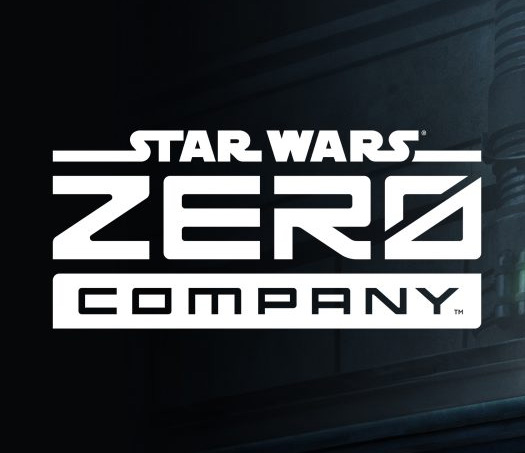Asus PhysX P1 – nova revolucija?
Datum objave 22.07.2006 - Denis Arunović
Zaključak (conclusion)
AGEIA-ina inicijativa imeplementiranja napredne fizike u igre i korištenja dediciranog ubrzivača za računanje tih efekata u teoriji je dobra ideja. U stvarnosti se pak situacija mijenja. AGEIA-a vjerojatno nije očekivala da će proizvođači grafičkih čipova, ATI i nVidia, tako brzo odgovoriti na novi izazov. Implementacija ubrzavanja fizike na grafičke kartice zapravo jako ide na ruku i ATI-ju i nVidiji s obzirom na to da su oba proizvođača mnogo uložila u razvoj i plasiranje multi-GPU tehnologija. Na ovaj način se jedna kartica može brinuti za akceleraciju fizike, a druga za grafiku. Ako pak igra ne podržava naprednu fiziku, obje kartice mogu služiti za ubrzavanje grafike. Ako krenemo još nešto ekstremnije, moguće je koristiti i sistem s tri grafičke kartice gdje će treća biti slabiji i jeftiniji model koji će se brinuti za fiziku, a ostale dvije će ubrzavati grafiku. Proizvođačima grafičkih karticu idu na ruku još neke stvari – postojeća podrška za PCI-Express sabirnicu (službeno se ne zna da li AGEIA-in čip podržava ovo sučelje), veliko iskustvo u dizaniranju procesora, veliki resursi, jaki odnosi s programerskim timovima koji razvijaju igre te na kraju nadolazeći DirectX 10 koji će anulirati mnoga ograničenja grafičkih procesora (ruku na srce, postoje informacije da će podrška za Physx također biti implementirana u Direct X).
Dakako, treba imati na umu da je podrška za ubzravanje fizike pomoću grafičkih kartica još u povojima odnosno ne postoji niti jedan naslov u kojem je podržana. Drugim riječima, rješenje još uvijek nije na tržištu, a nije ga moguće niti meritorno usporediti s AGEIA-inim čipom Physx. Sve što imamo su brojke i najave koje mogu, ali i ne moraju biti točne.
Nažalost, donekle sličnu situaciju imamo s AGEIA-inim ubrzivačem Službene informacije su vrlo šture i potkrijepljene su s preuveličanim marketiniškim tvrdnjama koje izgledaju odlično na papiru i odzvanjaju jako dobro u ušima laika, no tehnički napredniji korisnici ih vide kao mazanje očiju.
Još jedan izazov Physxu predstavljaju dvojezgreni odnosno relativno uskoro i četverojezgreni procesori čija snaga čak i u modernim aplikacijama u velikoj mjeri ostaje neiskorištena. Dediciranje jedne jezgre za akceleraciju fizike u igrama bi uz pravilnu imeplementaciju programera mogla postati stvarnost. Jedina nepoznanica ostaje koliko bi zapravo jedna jezgra opće namijene bila brža ili sporija od AGEIA-inog čipa.
Ma kraju, da li kupiti karticu baziranu na AGEIA-inom čipu? Premda Asus Physx P1 nije moguće kupiti u hrvatskim trgovinama, u inozemstvu je situacija drugačija. Tako brza pretraga na online dućanu Newegg rezultira pronalaskom Asusove kartice po cijeni od oko 260 USD. Za usporedbu, za oko 200 USD je u istoj trgovini moguće kupiti GeForce 7800 GT, karticu solidne brzine s kojom je moguće kvalitetno igrati sve postojeće naslove. Ako uzmemo u obzir broj aplikacija koje trenutno podržavaju Physx, cijena je prema našem mišljenju pretjerana. Da postoji mnogo više naslova koji su oplemenjeni efektima sličnim onim u CellFactoru, cijena bi bila koliko-toliko opravdana. Ovako Asus Physx P1 možemo preporučiti samo onima koji već imaju brz mašinu za igre, a nije im problem dati novac za tehnologiju koja može, ali i ne mora biti uspješna.
Svima ostalima preporučamo da pričekaju i vide da li će Physx zaista zaživjeti na tržištu ili će ga pregaziti neko drugo riješenje. AGEIA u teoriji ima dvije karte u rukavu – Unreal 3 engine i dugovječnost svog čipa. Unreal 3 engine će imati ugrađenu podršku za AGEIA-in čip odnosno cijela će fizika u novom Epicovom engineu biti bazirana na engineu NovodeX koji je napravila AGEIA. Druga velika prednost Physxa je to što prema tvrdnjama AGEIA-a ima mnogo neiskorištene snage te će njegove mogućnosti s vremenom nadograđivati putem drivera. Drugim riječima, AGEIA-a ne planira u skorije vrijeme izdati neki novi čip, već bi Physx trebao bez problema raditi i s igrama koje će tek biti predstavljene.
Conclusion in english
AGEIA’s initiative to implement advanced physics in 3D games and to use a dedicated accelarator to power those effects is a good idea, at least in theory. But real world enforces different rules of the play. AGEIA probably did not expect that major GPU manufactures, ATI and nVidia, will respond so fast to the challenge at hand. Implementing physics accelearation on GPUs goes well with both ATI and nVidia strategy as both manufacturers invested much time and resources to develop and market multi-GPU solutions. In a multi-GPU system one card would take care of physics calculations and other would do its regular job of rendering pixels to the screen. If game doesn’t support advanced physics, both card would work in a regular way – accelerating graphics. If we take this idea to extremes, it is possible to use standard multi-GPU array of two card to render graphics and use a separate cheaper GFX card to take care of physics calculations. GPU manufacturers have some other things on their side as well – all GPUs inherently support PCI-E interface (we still don’t know if AGEIA’s chip supports it), big experience in chip design, big resources, strong relations with developers and last, but not least, coming of DirectX 10 API which will remove many obstacles for GPUs to do physics acceleration (truth to say, there are rumours that Physx support will as well be implemented in new DirectX).
Of course, we need to have in mind that support for advanced physics through GPU is still in infant stages and that there are not titles currently on the market that support this technology. In other words, solution is not yet on the market and we can’t even compare it to AGEIA Physx PPU. All we have are numbers and announcements which can, but don’t need to be true.
Unfortunately, to some extent we have similar situation with AGEIA’s accelerator. Official informations about technical details are very scarce but there are lots of PR talk which sounds marvellous in theory and to users that don’t have much knowledge about technology. To more tehnically advanced users, that is like throwing dust in ones eyes.
One more challenge to Physx present dual-core and soon quad-core CPUs which have ample computing power that is largely unused in current applications. Dedicating one core for physics acceleration in games is with right software implementation probably possible. On the other hand, we still don’t know how much would one general purpouse core be slower or faster in comparison to a fully dedicated PPU.
In the end, should you buy a card based on AGEIA’s chip? Altough Asus Physx P1 is not available in croatian IT stores, but in foreign countryes situations is different. A quick search on popular e-shop Newegg quickly reveals that Asus Physx P1 can be obtained for cca 260 USD. For comparison, through same e-shop for about 200 USD you could a GeForce 7800 GT, pretty solid card which allows you to play all new games with decent details. If we take in account the number of applications that currently support Physx chip, price of this card is to high. If more game titles that support similar lever of physics effect and interaction like in CellFactor were on the market, price would be far more acceptable. Given all stated facts, we can recommend Asus Physx P1 only to users that already have a fast gaming rig and which don’t have a problem dishing out money for new technology that can, but doesn’t need to be succesfull.
To rest of the users we can recommend one thing – sit tight and wait. Maybe Physx will be triumphant and will become next standard in gaming industry. On the other, maybe this new accelerator will be trampled by senior players on the market – mainly ATI and nVidia. In theory AGEIA has two cards up its sleeve – Unreal 3 engine and durability of its product. Unreal 3 engine will have integrated support for AGEIA PPU. Better yet, whole physics engine will be based on NovodeX API which is essentialy AGEIA’s API for implementing support for Physx chip. Second relatively big advantage is the fact that Physx has much unttaped power, at least by AGEIA’s official statements. Additional features and support for games will be added through drivers updates (which are pretty streamlined from our experience). In other words, AGEIA has no plans for releasing new chips like ATI and nVidia do each 6 month and current Physx logic can and will power physics effects in upcoming games.
| Asus PhysX P1 | |||
| Pozitivno + | Velik potencijal u nadozećim naslovima poput Unreal Tournamenta 2007. Trenutno podržava napredne efekte uz vrlo mali ili nikakav pad performansi. Prema službenim navodima, ima dovoljno snage za buduće naslove. Prilično solidni driveri. Dobar bundle | ||
| Negativno - | S obzirom na trenutno podržane naslove, preskupa za ono što nudi. Upitna budućnost s obzirom na konkurenciju. | ||
| Ocjena |
|
||
| Ustupili | ASUS | ||
Forum
Objavljeno prije 1 minute
AutomobiliObjavljeno prije 5 minuta
Hobby alati - akcije, recenzije, iskustva...Objavljeno prije 5 minuta
3D printeriObjavljeno prije 6 minuta
4G/5G LTE-A,4G+ - usporedbe internet i govornih tarifa mobilnih operatera(gigabox,pokObjavljeno prije 8 minuta
RAMDisk - Ubrzavanje kompa uz pomoc prebacivanja cache/temp foldera na RAM DiskNovosti
Procurile su prve slike Elder Scrolls 4: Oblivion Remastera
Nakon godina glasina, procurjelih informacija i nagađanja, napokon imamo potvrdu da je remake igre Oblivion na putu. Korisnik u/Taurnil je primijetio da je Virtuos Games slučajno postavio niz screenshotova na svoju web-stranicu, dajući prvi... Pročitaj više
Nova piratska igra u svemiru
Dok publika već sada povlači usporedbe s Disneyevim animiranim filmom Treasure Planet, razvojni tim Ticking Clock Games predstavio je novi pogled na igrivost i priču svoje nadolazeće svemirske piratske igre, Void Sails. Igra obećava iskustv... Pročitaj više
Glasine o novoj Prototype igri
Nova Prototype igra navodno je u razvoju. Prema korisniku na Redditu imena Bigbyy, dobio je informacije o novoj igri iz serijala kao dio nedavne sesije fokus grupe. Korisnik tvrdi da će se Alex Mercer vratiti kao protagonist. Igrivost će na... Pročitaj više
Najavljena nova taktička Star Wars igra
(izvor slika) Star Wars: Zero Company je službeni naziv dugo očekivane igre na poteze od Respawn Entertainmenta i Bit Reactora, koja igračima daje kontrolu nad vodom tijekom Klonskih ratova. Najavljeno je da će sve biti predstavljeno na pan... Pročitaj više
Što je novo u Midjourney V7 nakon godinu dana pauze?
Midjourney je službeno lansirao svoj najnoviji model za generiranje slika, Midjourney V7. Ovaj model nije samo nadogradnja prethodne generacije tehnologije, već i još jedno remek-djelo duboke kultivacije tima Midjourney u području umjetne i... Pročitaj više
Sve novosti




